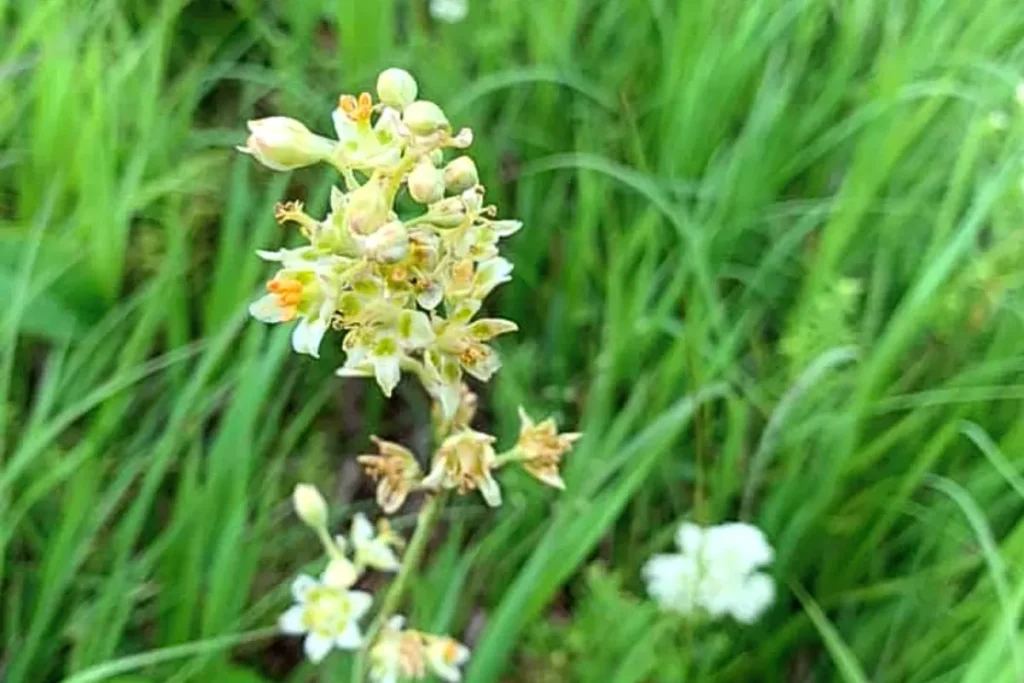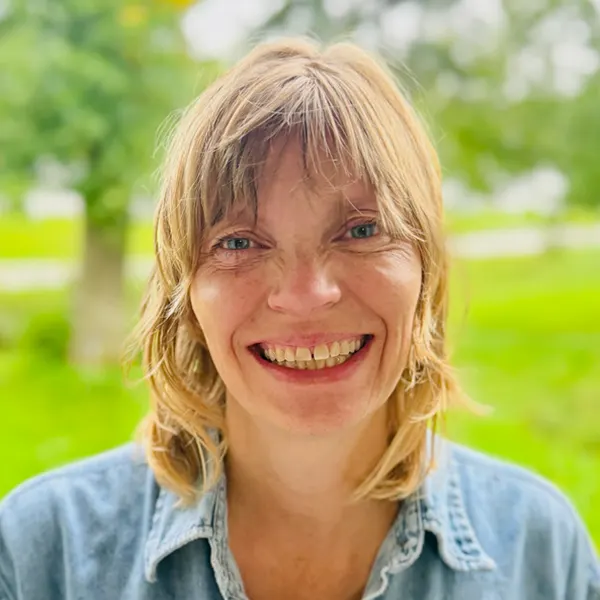Tallgrass Prairie BioBlitz 2019
Rhyan Schicker, CURE Board of Directors, Member-at-Large
To wander through the prairie on a Saturday is already my idea of perfect, but nothing can beat walking through a prairie alongside a group of botanically talented people, overflowing with a passion for plants. The 2019 Tallgrass Bioblitz provided this opportunity, among many others.
Leadplant, beautiful still, even in its early stages, grows alongside bedstraw, with prairie rose, and Canada anemone scattered in between. The rain couldn’t stop us. We found a species of Camas, a tall flowering stalk with petals resembling eggs; white with a yellow center. We came across Tall Meadow Rue, which grows over six feet tall. This plant has separate male and female plants, each with pistils hanging from the center to resemble petals, which neither sex actually has.
I had not seen such a thick stand of porcupine grass before, and I can never get over how impressive a plant it is. Between different moisture cycles, the awn of the seed twists and corkscrews it into the ground awaiting germination. Although this plant poses issues for grazing animals, it still has its place in the prairie. As we walked through the stand, it clung to us with its sharp tip.
Besides the joy it brought me, the prairie survey was a good practice session for the plant identification training I partake in at work. I had just spent two days in the field for a plant identification session earlier that week. It was extremely beneficial to be given another opportunity to search the prairie and ID everything I found.
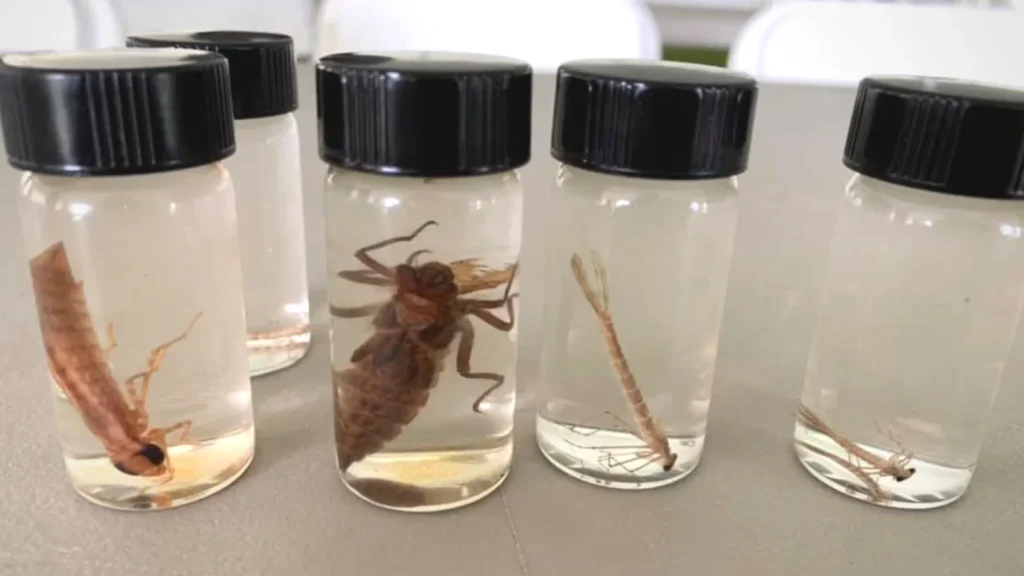
Besides the awesome field surveys, we also got to sit in on the Minnesota Dragonfly Society presentation. I can’t believe how much I learned! Nothing compares to sitting with a room full of people’ oohing and aahing’ along with you over facts about dragonfly behavior and anatomy. You can’t find that everywhere—I felt lucky and at home, to be surrounded by these folks! We learned that despite dragonflies’ essential ecosystem role, observations and record-keeping about them is scarce in my home county as well as the one hosting the Blitz. With some practice and the energy to capture them, anyone can participate in dragonfly monitoring. Let’s get out there and find the dragonflies living in our prairies, on our riverbanks, and in our backyards! Dragonflies and damselflies are excellent indicator species, and they’re fascinating to watch. A win-win for all!
To cap my BioBlitz experience, I won the perfect silent auction item from the Minnesota Dragonfly Society. It included a Minnesota Dragonfly Society dual membership and a neat field hat that features an accurate drawing of a dragonfly nymph graphic on the back. All proceeds for the silent auction went back into the hands of the wonderful agencies and organizations that put on the Tallgrass Prairie BioBlitz. Thank you CURE, Land Stewardship Project, the U.S. Fish and Wildlife Service, and the Minnesota Department of Natural Resources for the eventful weekend!
Minnesota Master Naturalists Prairies & Potholes Training
Janet Timmerman, Lake Wilson, MN
Thoreau once wrote, “What is the use of a house if you haven’t got a tolerable planet to put it on?”
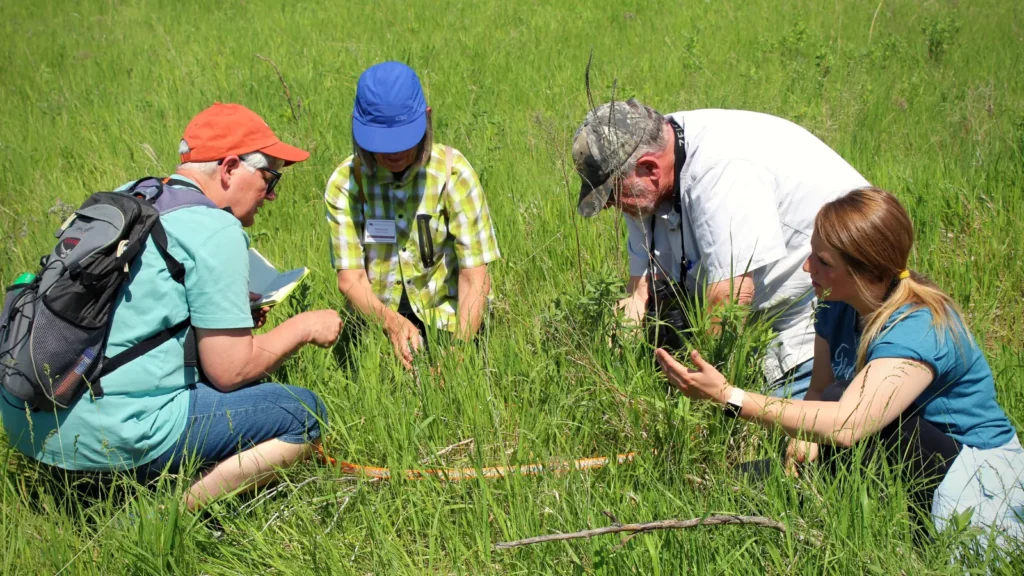
Listening to all the climate change news and dire predictions was leaving me feeling helpless against the great odds humanity, and all species face. I decided rather than wringing my hands and swearing loudly every time the news came on; I would try to become a small part of the remedy. To do this, I needed more knowledge about the world around me and new ways to share my experiences with others. Besides that, it was in the depths of another winter snowfall, and I needed some hope that the world would again turn green. So on a whim, I signed up for the Prairies & Potholes Master Naturalist class developed by the Minnesota Extension Agency and sponsored by CURE.
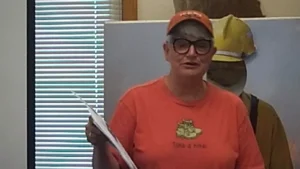
It was a leap of faith well worth the taking. As I set up my campsite at Lac qui Parle State Park getting ready for a week-long learning experience, I wondered about the course content, the teachers, and who my classmates would be. I came searching for a cohort of like-minded people that I could share my love of the outdoors with and maybe continue to keep in contact with when the class was complete. Well, I think I found them. In our first introduction to each other, we didn’t just say our names and our hometowns; we had to write three things about ourselves, pick up someone else’s note and try to match the note to who might fit those descriptions. Some of my classmates had traveled to Alaska, grew mushrooms, and were naturalists in Texas too! These were my people!
As Amy Rager and Peg Furshong, the Minnesota Master Naturalist Prairies & Potholes course instructors, worked through the lessons with us, I came to understand better the interconnectedness of everything we touch and see. As a prairie dweller for most of my life, I came with an ingrained love for the landscape, but I acquired whole new ways to look at it. Classmates helped me identify bird calls, a small sedge, and nematodes. Each field trip took us deeper into the intricate prairie biome. When I saw a small white lady slipper for the first time, I was charmed! Amy had me hooked. I can no longer walk without looking down, picking a leaf, asking questions about a bug or a butterfly. It is like regaining my sight.
Participants were required to work within small groups to develop and implement a capstone project. My group worked on a brochure. Whether it will be of use is not as important to me as the process of bonding with the people in my group. We managed to become a team in the end. This class provided me with tools, knowledge, and most importantly, the encouragement to continue to learn and share my love of the prairie.

